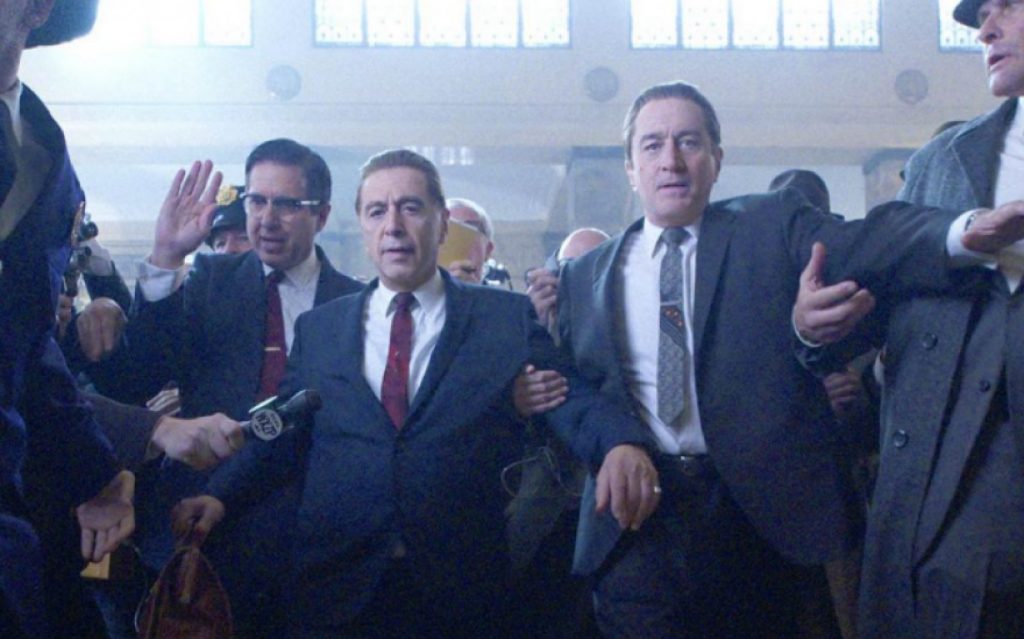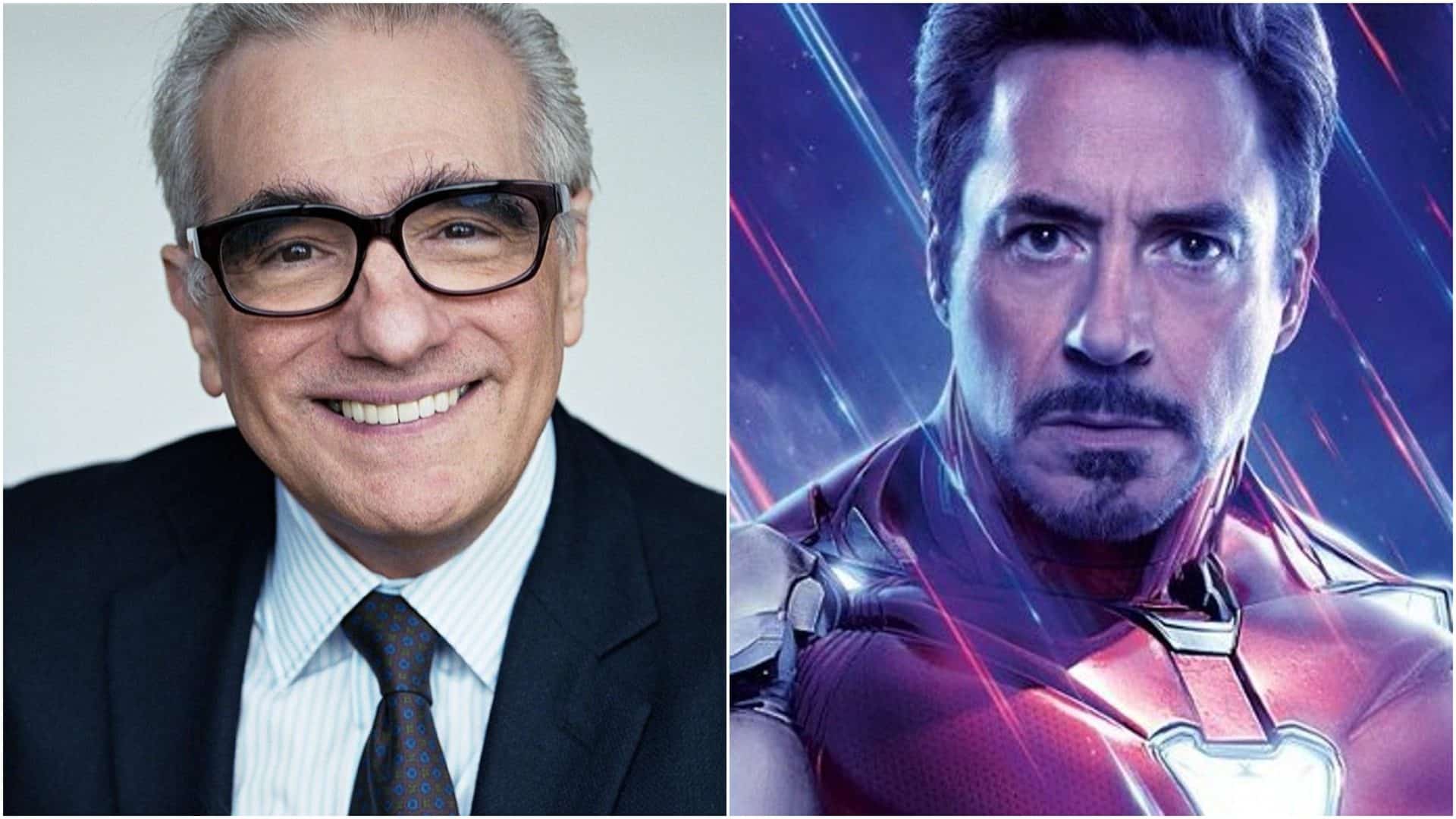There’s a lot more nuance to be found in the discourse surrounding Scorsese, Marvel movies and arthouse cinema.
There’s something particularly dispiriting about seeing your heroes demean the things you love wholesale. Roger Ebert championed films from every corner of the prestige-to-pulp spectrum, and yet declared that video games could never be art. Nevermind his own objections to the stigmatization of various genres or his admission that he’d never played more than a couple of games — he had principles, by god, and that was enough to write off an entire medium.
There’s a sense of déjà vu, then, when Martin Scorsese, one of our absolute greatest filmmakers, recently declared that MCU films were not cinema. Nevermind his own efforts to champion genres considered lesser in their day, or his confession to only having “tried to watch a few” of those movies — he too has standards, and he’s positive those dreaded superhero novelties could never hope to meet them.
No one has to like everything. Not every genre or medium or slice of the entertainment landscape will appeal to everyone. It’s particularly disheartening, though, to watch people you respect and admire not only dismiss the artistic validity of wide swaths of art almost sight-unseen, but then found their snap judgments on rampant myths and misconceptions.

Because Marvel movies are cinema. Full stop. Anything that avails itself of the cinematic form, that tells stories in pixels or celluloid, that expresses emotions and ideas in a flood of sound and images, is cinema. The MCU and its progeny certainly qualify.
But even by Scorsese’s own standards and misguided attempt to draw a line between high and low art, the Marvel movies more than pass muster. He decries the MCU’s slate of movies as “sequels in name but remakes in spirit”, trotting out the tired canard that the near two-dozen films under the Marvel banner are carbon copies of one another. That blind pronouncement ignores the fact that a random spin of the MCU’s roulette wheel could net you a spy thriller, a zany heist comedy, a space opera, a teenage romp, or a story of succession and civilization.
Scorsese also declares, without deigning to watch these films, that they’re “designed as variations on a finite number of themes.” There too, he ignores how the Marvel movies have tackled topics as varied as PTSD, depression, the hopes and anxieties of adopted children, the papered-over legacy of colonialism, the stifling of feminine self-actualization, and the treatment of black people around the world.
It’s particularly disheartening, though, to watch people you respect and admire not only dismiss the artistic validity of wide swaths of art almost sight-unseen, but then found their snap judgments on rampant myths and misconceptions.
Yes, inevitably in these films, somebody dons tights and ends up in a fistfight. But that no more makes them empty duplicates of one another, nor limits the themes they can and do explore, than the description “white male antihero rises and falls within a life of crime” fairly sums up the multiplicity of ideas Scorsese himself has expressed within that framework.
What distinguishes the Marvel movies from their scores of imitators is the very thing their vaunted doubter uses to diminish them — character. Scorsese invokes the works of Alfred Hitchcock and tries to distinguish them by arguing that while Hitchock indulged in spectacle, he still filled his setpieces with distinctive personalities. And yet, in that Scorsese unwittingly captures why the Marvel movies he so decries have been so successful.
There are, after all, hundreds of options for big budget explosions and previz fireworks at the box office these days, whether or not you want them with capes. The reason the MCU has risen above their competitors in receipts and acclaim — an empire built on the backs of B- and C-list characters after Marvel sold off the rights to their heavy hitters — is that it gave audiences a reason to care about the people within those larger-than-life skirmishes.

It gave us Tony Stark teetering between saving the world and authoring his own self-destruction — a “contradictory and sometimes paradoxical nature.” It gave us Black Widow fighting to wash away the “red in her ledger.” It gave us T’Challa balancing his reverence for his family and traditions with his responsibilities to his people and to the future. It gave us Captain America struggling to reconcile his high-minded ideals with the realities of the modern world and his unfamiliar place in it. It made heroes of divorced dads and adopted children, and it crafted villains who fought for fair reasons if not with fair methods.
That is, contrary to Scorsese’s blinkered dismissals, its own admirable path toward earning the audience’s trust film after film, its own way of exploring the edges of the possible, its own form of embracing surprise. There is, after all, surprise in wringing the profound pathos out of a gun-wielding, limb-thieving, cartoon rodent. There’s surprise in a film that distills the nominal political disagreements between two people down to the emotional sore spots that drive them both. There’s surprise in ending the franchise’s landmark capstone with the deaths of half the audience’s favorite characters, and the next one starting with an hour of mourning and regret.
There is even the much-ballyhooed “risk” that Scorsese proclaims to be lacking in the films that, by his own account, he’s hardly seen. There is risk in crafting a blockbuster film around the fault lines and hardships of the black experience. There is risk in trying to tell stories about slates of barely-known characters who don’t fit the traditional, squared-jawed, strapping hero model. There is untold risk in trusting audiences to follow a story that unfolds over the course of more than twenty films stretching over a decade, to build character arcs that take place over years, in a way that has never been done before on the silver screen.

This is all meaningless to Marty, in the throes of the same outmoded dictum that Roger Ebert once trotted out when deriding the artistic merits of any piece of interactive art — that Marvel’s films are somehow fatally flawed because they lack an “auteur.” Nevermind how the voices of Taika Waititi, James Gunn, Ryan Coogler, Joss Whedon, and many others ring out loud and clear in their films. Even if Scorsese were right to dismiss them, his outdated framework ignores the way that cinema is an inherently collaborative medium, one where the meld of creative contributions at every level of the production comes together to produce the unified whole.
In our rush to ascribe individual authorship to what takes scores of creative voices to construct, commentators have anointed the likes of Marvel impresario Kevin Feige, or Lucasfilm head Kathleen Kennedy as the auteurs of their respective franchises. But the truth is that this is just another way of cramming complex creative endeavors into boxes that never fit standalone films very well to begin with, let alone series of them. The Marvel Cinematic Universe has many fathers, just as Scorsese’s films do, and acknowledging that rather than clinging to antiquated notions of sole authorship is neither a failure nor a disqualification from artistic validity.
To stretch that assumption further and suggest that nobody fights for a vision within enterprises that favor collaboration over dictation, that nobody builds beautiful found poetry within the bounds of continuity and expectation, is folly. The line between “true art” and art with the temerity to be financed by a corporation has always been an invisible one, and one that unfairly downgrades incredible cinematic works — Marvel or otherwise — due solely to the name on the tin rather than the stories told or the images conjured. Scorsese doesn’t make movies for free, nor should he, and it hasn’t hindered his ability to do amazing work.
The Marvel Cinematic Universe has many fathers, just as Scorsese’s films do, and acknowledging that rather than clinging to antiquated notions of sole authorship is neither a failure nor a disqualification from artistic validity.
It has, however, sent him to Netflix, after he couldn’t find financing for The Irishman through the normal Hollywood channels and choice that, he laments, will result in only a limited theatrical release. Therein lie the twin fallacies at the core his industry-wide complaints: his belief that superhero fare is responsible for the decline in commercial viability of other films and his overemphasis on the big screen experience.
In fairness, Marty is far from the first pundit to point his finger in that direction. But while it’s easy to look at Avengers: Endgame setting box office records while smaller, underseen films languish, and decide the one must be responsible for the other, the truth is far more complicated.
Ticket sales have been steadily falling in North America for the past twenty years, a decline that started more than a decade before Robert Downey Jr. first laced up his iron boots. More to the point, every week, film-lovers have plenty of options to see adult-skewing, non-franchise movies at the theater, but most of them stay home. Marvel isn’t to blame for that. Audiences are.

Yes, superhero movies and their equivalents clean up at the box office. But it’s not, as Scorsese surmises, because the movie industry only offers blockbusters to the point that audiences have no taste for anything else. Studios offer plenty of counterprogramming and alternatives by the dozens. There are more options and avenues to watch the usual dramas and comedies and indie darlings today than existed ten or twenty or fifty years ago. And what’s more, there’s still a market for them — audiences just don’t think they’re worth schlepping down to the theater for anymore.
As the quality of home theater setups has improved, and the hassles (not to mention the costs) of going to a traditional theater have risen, it takes more and more to convince the average person to trundle off to the cineplex, plop down big bucks for concessions, and sit through trailers and ads and noisy neighbors just to get their movie fix. The inevitable result is that the movies that depend more on the big screen experience — high volume, high octane, high action outings — are going to command more fannies in seats and wallets on counters than the more languid or talkier films most viewers can just as easily enjoy at home.
Maybe you see this as a tragedy. Scorsese certainly seems to. Though he places the blame in the wrong places, his most sympathetic impulse is to lament that these new market realities create fewer opportunities for films to be shown as their directors meant for them to be seen — on the big screen.
There are more options and avenues to watch the usual dramas and comedies and indie darlings today than existed ten or twenty or fifty years ago… audiences just don’t think they’re worth schlepping down to the theater for anymore.
Audiences may still like adult dramas and romantic comedies and other less-blockbusting fare, but they’re mostly content to watch them from the comfort of their couches. The current surfeit of streaming pipelines means there’s more and more opportunities for great and new works to be seen, but not in the format Marty might prefer. I understand and sympathize.
But to prioritize format over reach, over opportunity, over access, is just as misguided. Sure, no filmmaker or cinephile worth their salt wants to watch a movie on their phones. In an ideal world, every film would have a big-screen debut with a crystal clear image and pitch-perfect sound, but that’s unrealistic.
And what’s more, the film history that Scorsese wants to keep alive, the masterworks of Bergman and Godard and Hitchcock, have survived through fans being able to discover and watch them at home. Those films’ home viewings have far outlasted their theatrical runs. If Marty wants movie-lovers to continue seeing those films and marveling at them for another sixty or seventy years, he, and we, cannot let the perfect be the enemy of the good.
After all, it’s not as though Scorsese ever refused to allow his films to be released on home video or shown on television. Scores of cinephiles, myself included, couldn’t stroll down to the theater whenever we wanted, but still discovered the magic of movies on comparatively small television screens, often with commercial interruptions, sometimes even with (gasp) fullscreen versions. It was undoubtedly not the optimal viewing setup, but the artistry was no less potent, the surprise no less electric, the revelation no less rapturous. Great films still touch us, whether projected onto a massive screen or delivered intimately in the palms of our hands.

That’s understandably hard to reckon with for many film lovers. Sometimes the ground shifts uncomfortably beneath our feet. That’s especially true for those lucky few fortunate enough to become giants in their fields, whose decades-long output and influence allow them to witness such changes firsthand.
But to decry the shift of the medium toward home-viewing as a sky-is-falling calamity, to reject the artistic value of films that don’t match one’s preferred rubric sight unseen, to attempt to divide the world into cinema and “audiovisual entertainment”, is to transform oneself into the same sort of disapproving naysayer who once denied that cinema could be an art form at all. I love Martin Scorsese’s films. I just wish he didn’t hate mine.
The truth is that Scorsese’s forgotten more about film in the past week than I’ll ever know in a lifetime. When he talks about his peers, when he opens up about this industry, we should listen. But god help me, when I’m old and gray — and the most successful movie in the world is a Let’s Play of Fortnite 5 that fans beam directly into their eyeballs — I hope I’m more generous, more understanding, more open and hospitable to the things outside my experiences and preferences, than Martin Scorsese is to the worthwhile cinematic works he’s all too ready to dismiss out of hand, for all the wrong reasons.

